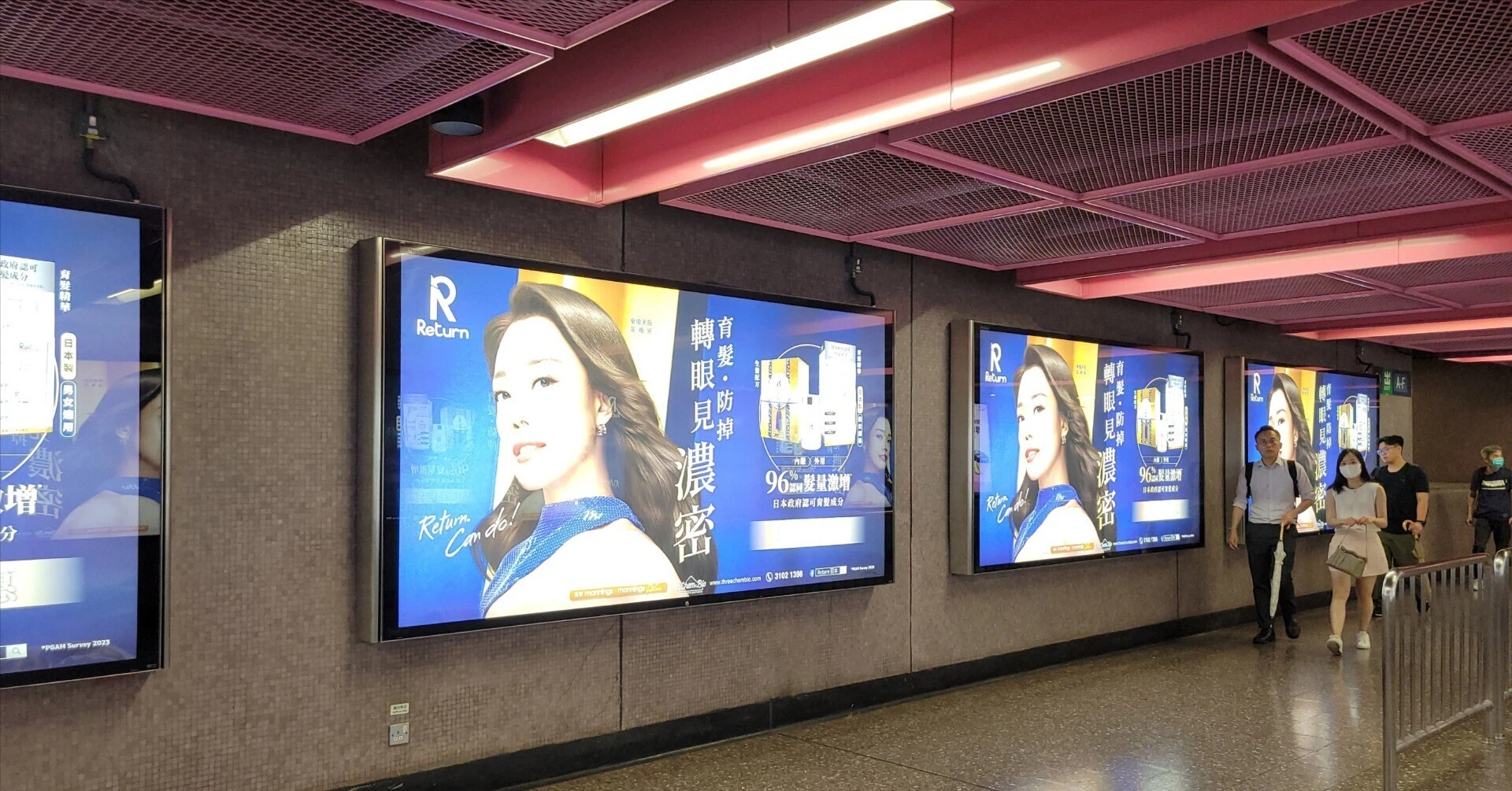
Hong Kong’s Mass Transit Railway (MTR) system remains one of the most impactful advertising channels, even in today’s increasingly digital landscape. Although traditional in format, MTR advertising offers an immense reach. With a population of approximately 7.3 million, and an estimated 5 million people using the MTR daily, the scale of exposure is undeniable. In particular, placing large-format brand advertisements in high-traffic stations like Causeway Bay—a hub for both commerce and business—can significantly boost brand recognition.
We are currently supporting a supplement brand in its market entry phase. This category is intensely competitive, making it difficult for individual products to stand out. As such, advertising strategy plays a pivotal role in success. From the consumer’s perspective, purchasing decisions are driven not only by a product’s ingredients or functionality but also by whether the brand uses a well-known talent or model. Strong visual appeal helps imprint a brand in the consumer’s mind, increasing the likelihood of selection. In this context, MTR’s high visibility and broad reach make it an especially effective medium for promoting a product’s USP (Unique Selling Proposition) during the initial launch phase.
This phenomenon isn’t limited to Hong Kong. In Japan as well, brands that actively invest in consumer-facing advertising often enjoy better evaluations from retail buyers. When a product is featured in a prominent public space, retailers tend to perceive it as a high-potential item, increasing the chances of wider distribution and shelf space. In fact, all three of the top supplement brands in the Hong Kong market make consistent and strategic use of MTR advertising. High consumer awareness becomes a powerful bargaining chip in retail negotiations, helping brands secure visibility in stores and access to valuable promotional opportunities.
In the past, advertising strategy followed a linear model: first build broad awareness, then convert that awareness into sales. However, in today’s digital-first climate, this path has become less straightforward. Particularly in product categories where in-store purchase remains dominant, digital ads alone may not provide the necessary influence to sway retailers or spark consumer action. In contrast, mass-reach channels like MTR advertising effectively bridge the gap—driving both awareness and in-store purchase intent.
Of course, sustaining such large-scale campaigns comes with a substantial cost. But when measured against the scale of reach and business return, the value is evident. For brands looking to accelerate growth in the Hong Kong market, MTR advertising is not just a traditional format—it’s a strategic asset that delivers measurable impact.

